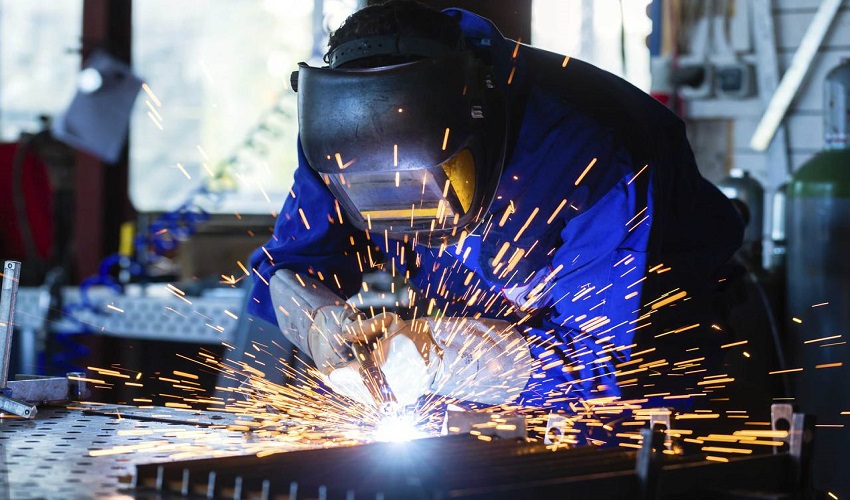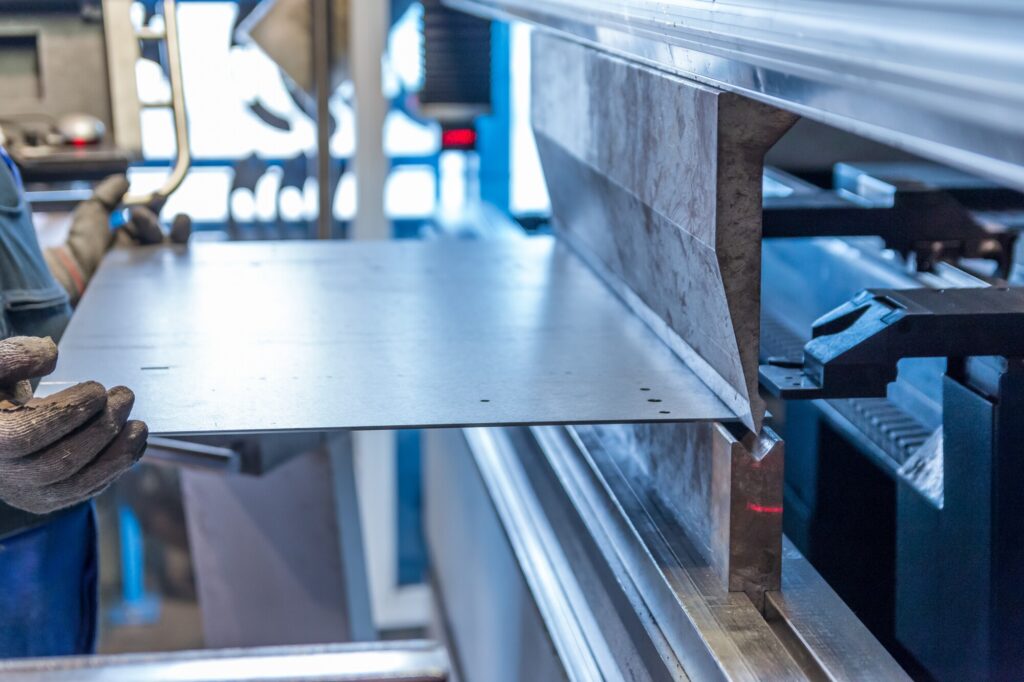Alpha Reo: Leading the Way in Reinforced Steel Solutions
Alpha Reo: Leading the Way in Reinforced Steel Solutions
Blog Article
Comprehensive Analysis of Cutting-Edge Techniques in Steel Construction Industry
As the steel fabrication sector continues to evolve, the combination of advanced strategies has come to be necessary for staying affordable and meeting the demands of modern-day manufacturing criteria. From laser cutting innovations to the usage of robotics and 3D printing in steel manufacturing, the landscape of construction strategies is quickly transforming. With each development bringing its very own collection of obstacles and benefits, an extensive analysis of these techniques is critical for companies intending to streamline their processes, improve accuracy, and inevitably, elevate the high quality of their steel construction result. In this vibrant industry where innovation plays a crucial duty, understanding the nuances of these innovative methods is not simply an alternative yet a necessity for those wanting to build in advance in the ever-evolving globe of steel manufacture.
Laser Reducing Advancements
In the world of steel fabrication, laser cutting improvements have actually reinvented the precision and efficiency of steel shaping processes. By utilizing the power of concentrated laser light beams, makers can now attain unparalleled degrees of accuracy when reducing with numerous sorts of metals. This modern technology makes it possible for elaborate styles to be performed with marginal product wastage, making it a cost-effective remedy for markets calling for high precision parts.
One of the vital advantages of laser cutting is its capacity to deal with a wide variety of products, including stainless-steel, aluminum, and carbon steel, easily. The process creates clean, burr-free edges, eliminating the requirement for additional ending up steps. In addition, the non-contact nature of laser cutting reduces the threat of material contamination, causing higher high quality final product.
In addition, laser cutting devices can be configured to make swift, specific cuts, substantially lowering production time compared to conventional cutting techniques. This rate and precision make laser reducing particularly suitable for automation atmospheres where performance is extremely important. As technology remains to advancement, laser cutting is poised to play a significantly essential duty in the steel fabrication industry.

CNC Machining Innovations
The evolution of CNC machining technologies has actually ushered in a new period of accuracy and efficiency in the steel fabrication sector. Computer System Numerical Control (CNC) devices have actually changed steel construction by providing unrivaled precision and repeatability in the production process. steel fabricators melbourne. Among the essential innovations in CNC machining is the assimilation of sophisticated software systems that make it possible for real-time tracking and changes, resulting in boosted efficiency and top quality control
Additionally, the growth of multi-axis CNC devices has actually allowed for the manufacture of complex steel elements with detailed designs that were formerly testing to produce. These makers can perform a large range of machining operations, including milling, exploration, transforming, and grinding, all with high levels of precision.
In addition, the unification of automation and robotics in CNC machining has structured production processes, lowered lead times, and reduced the margin of mistake. This assimilation of cutting-edge innovations not only improves performance but also makes sure regular top quality throughout all fabricated steel parts. To conclude, CNC machining advancements remain to drive innovations in the steel fabrication industry, setting new standards for precision and productivity.
Automated Welding Technologies
Automated welding technologies have transformed the steel construction market, improving effectiveness and precision in the welding process. These advanced technologies use computer-controlled systems to automate the welding process, resulting in higher performance degrees and enhanced weld quality. One of the key advantages of automated welding is the capacity to do complicated welds with constant accuracy, reducing the chance of mistakes and remodel.
Robotic welding systems are at the center of automated welding innovations, using unparalleled rate and precision. These systems can deal with a variety Our site of welding jobs, from easy to intricate, effortlessly (steel fabrication melbourne). By using advanced sensing units and software application, robotic welders can adjust to variations in product and joint geometry, ensuring an attire and reputable weld
Furthermore, automated welding modern technologies enhance workplace safety and security by reducing the direct exposure of human welders to dangerous fumes and extreme warm. As the steel construction industry remains to progress, including automated welding technologies will be vital for firms aiming to stay affordable and fulfill the expanding needs for high-quality welded products.
Robotics Assimilation in Fabrication
Utilizing robot systems in construction procedures has actually become an essential approach for improving effectiveness and accuracy in contemporary production atmospheres. Robotics combination in steel fabrication supplies a myriad of benefits, consisting of boosted efficiency, enhanced quality assurance, and enhanced precaution. These innovative robot systems are furnished with sophisticated sensors and programming capabilities, permitting them to execute complex tasks with a high degree of precision and repeatability.
One of the essential advantages of robotics combination in steel fabrication is the capacity to automate repeated tasks, such as product handling, reducing, welding, and assembly procedures. This not only accelerates manufacturing cycles however also lowers the danger of human error, bring about higher overall item quality. Furthermore, robots can run 24/7, substantially increasing manufacturing outcome and conference tight task due dates.

3D Printing in Steel Production
Having check my blog actually reinvented the steel fabrication industry with robotics assimilation, the burgeoning exploration of 3D printing in steel manufacturing is positioned to more breakthrough the world of modern-day manufacturing techniques. 3D printing, likewise referred to as additive production, supplies unprecedented design flexibility and intricacy, allowing the development of complex steel frameworks that were formerly unattainable via typical manufacturing methods. By using computer-aided style (CAD) software application, manufacturers can precisely control the layer-by-layer deposition of steel material, resulting in parts with enhanced performances and geometries.
One of the essential advantages of 3D printing in steel manufacturing is its ability to reduce product waste dramatically. Unlike subtractive production processes where excess product is cut away, 3D printing only utilizes the necessary quantity of steel required for the final component. This efficiency not only leads to cost financial savings however likewise lines up with sustainable manufacturing techniques by decreasing environmental influence.
Additionally, 3D printing allows fast prototyping and customization, permitting the manufacturing of little batches of complex steel parts with brief lead times. As the modern technology proceeds to develop and become extra easily accessible, its combination into mainstream steel manufacture processes is anticipated to drive technology and performance across the sector.
Conclusion
In final thought, the steel construction sector has actually seen significant innovations in techniques such as laser cutting, CNC machining, automated welding, robotics integration, and 3D printing. These advanced innovations have actually reinvented the means steel items are made, bring about raised cost-effectiveness, effectiveness, and accuracy. Continued financial investment in these ingenious methods is important for the market to stay competitive and fulfill the needs of modern-day production processes.
As the steel fabrication sector proceeds to progress, the combination of innovative techniques has come to be crucial for staying affordable and satisfying the demands of modern-day production requirements.One of the key benefits of laser cutting is its capacity to deal with a broad array of products, consisting of stainless steel, light weight aluminum, and carbon steel, with simplicity.Automated welding technologies have actually reinvented the steel fabrication sector, improving efficiency and accuracy in the welding process.Having actually revolutionized the steel manufacture industry via robotics combination, the burgeoning expedition moved here of 3D printing in steel manufacturing is positioned to further breakthrough the world of modern-day manufacturing strategies.In conclusion, the steel manufacture market has actually seen significant innovations in methods such as laser cutting, CNC machining, automated welding, robotics assimilation, and 3D printing.
Report this page